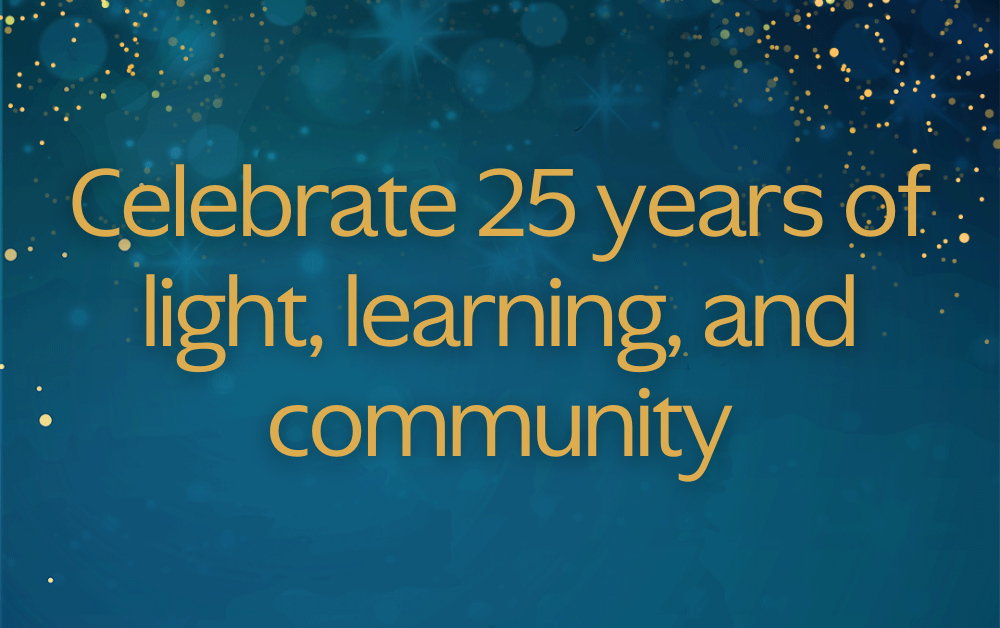Last Friday our family experienced a mini ingathering of the exiles: Our oldest came home for the summer, our middle one returned from nine months on a gap year program, our youngest didn’t have a classmate’s b-mitzvah to attend. And so, for the first time since last summer, our whole crew was around the table for Shabbat dinner. However briefly (I left on a business trip Sunday morning), we got to feel a special sense of at-homeness that can happen when all the chickens are in the coop.
Of course, having everyone at home isn’t all sunshine, rainbows, and lollipops. Everyone needs to eat, and everyone has different foods they like or don’t like, so the regular “Have you had any thoughts about dinner?” text exchange my wife and I have (we try to plan, we really do) becomes that much more complicated (and expensive). There are negotiations about who gets the car, who will do the dishes, who will mow the lawn. As others who have returned to their childhood homes as adults might have experienced, there can be a bit of reversion to senior year of high school behavior patterns—among both parents and children. And yet, as others who have welcomed home adult children may have felt, I find it’s a wonderful problem to have (for a little while—and then it’s nice when they go back out in the world and do their things).
I write and speak regularly about the basic definition of spirituality that I’ve developed: It’s our capacity to feel deeply at home in the universe. While Shabbat in the physical home where I live is always a significant spiritual moment, I experience an even richer sense of being at home when the people I care about most are there with me. And I think they do too.
Perhaps in anticipation of the journey toward the land of Canaan that the Israelites will resume soon after we begin the Book of Numbers, the closing chapters of Leviticus offer some of the most stirring reflections on what it means to be at-home—not only on an individual level, but on the level of society. This is where we are instructed about the sabbatical year, applying the practice of Shabbat not only to our individual homes, but to the larger collective home: letting the land itself rest, releasing indentured servants, cancelling debts (in the Deuteronomic version, at least).
In addition, every fifty years comes the yovel, or Jubilee year. “Count off seven sabbaths of years—seven times seven years—so that the seven sabbaths of years amount to a period of forty-nine years. Then have the trumpet sounded everywhere on the tenth day of the seventh month; on the Day of Atonement sound the trumpet throughout your land. Consecrate the fiftieth year and proclaim liberty throughout the land to all its inhabitants.” (Lev. 25:8-10) During this Jubilee year, not only does the land rest, and not only do the people rest, but something even larger happens: dror, liberty. Specifically, the Torah states, “It shall be a jubilee for you; each one of you is to return to his family property and each to his own clan.” Land sales are effectively cancelled, and everyone is to return to the plot of land from which their ancestors came. It is, in effect, pressing the reset button on society.
In his commentary on this passage, Rabbi Judah Loew (the Maharal of Prague, 1520-1609) explains why yovel is proclaimed not on Rosh Hashanah, as we might expect, but on the tenth of the month of Tishrei, Yom Kippur: “The Jubilee and Yom Kippur—the two are really one: For the Jubilee is the return of each individual to their original state, to be as it was in the beginning. And so too with Yom Kippur: everyone returns to their original state. As the Holy Blessed One atones for them, they return to their original state.” (Gur Aryeh Behar, s.v. “M’mashma”)
The Maharal highlights the idea that just as the Jubilee is a more potent version of the sabbatical—seven times seven years, a sabbatical of sabbaticals—Yom Kippur is also described (in last week’s Torah portion) as Shabbat Shabbaton, an even more concentrated version of Shabbat, as it were. What they share in common is that they are both moments of the deepest homecoming: Yovel in a physical and political sense, Yom Kippur in spiritual and social sense.
My colleague Rabbi Marc Margolius likes to say that Jewish mindfulness practice is about “microdosing Shabbat”—creating moments of pause and return-to-center not only every seven days, but every seven moments. I think that’s true. And, as we close the Book of Leviticus, I think the Torah reminds us that this practice is not only meant to help us feel at home in our bodies, minds, and emotions so that we can weather the storm; it’s ultimately directed toward a vision of social renewal and transformation in which all of us sense that we have a place, that we’re deeply at home in the universe, held in the embrace of the Holy One.


